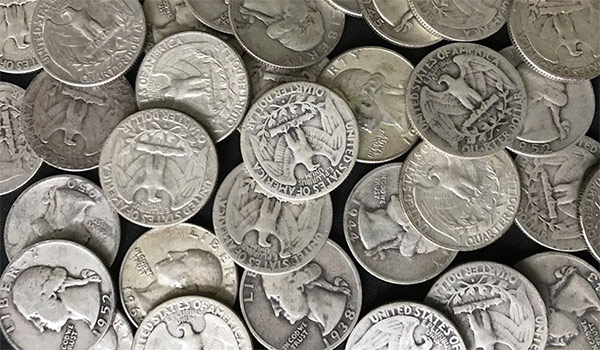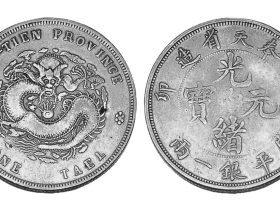
Why 90% junk silver coins are worth the investment? Though they were struck with a 1964 mint date but in truth, some of the junk U.S. silver dimes were minted until 1966.
Junk silver is actually a misnomer for coins with 90% silver and 10% copper content.
Junk silver coins may have no value for collectors in a sense that junk silver dollars can be bought without regard for their aesthetic quality – it would not matter much if it’s nicked or scratched on the surface – as long as its intrinsic value is still intact.
Despite its misleading name, junk silver is the colloquial term for circulated silver coins in the United States that were minted prior to the Coinage Act of 1965. Enacted on July 23, 1965, the Coin Act stopped the minting and circulation of dimes and quarter dollars with 90% silver content.
The year 1965 marked a period of coin shortage in the U.S. coin history. Subsequently, the Coinage Act also signaled the rise of silver prices. Junk silver coins are also present in Canada.
Today, the circulated coins inside the two countries contain copper and nickel, which are of far lesser intrinsic value.
Junk Silver Coins in the United States and in Canada
The common junk U.S. silver coins are:
• 1916-1945 Mercury Dime
• 1932-1964 Washington Quarter
• 1942-1945 Silver War Nickel
• 1946-1964 Roosevelt Dime
• 1916-1947 Liberty Half Dollar
• 1948-1963 Franklin Half Dollar
• 1964 Kennedy Half Dollar
• 1965-1970 Kennedy Half Dollar
• 1878-1921 Morgan Dollar
• 1921-1935 Peace Dollar
• 1971-1976 Eisenhower Dollar
In Canada, most junk silver bullions are those minted before 1967 such as:
• 1920-1967 Dime
• 1920-1967 Quarter
• 1920-1967 Half Dollar
• 1935-1967 Dollar
The Scarcity of Silver Coins
It remains a fact that even though junk silver coins are in circulation, majority of the American population have not seen or beheld any of these silver dimes at all. Junk silver dollars have always been rare since the curtailing of its minting in 1965.
The scarcity of 90% junk silver can be explained through the Gresham Law. It states that when two coins of the same face value but different intrinsic qualities are circulated together, the coin made out of precious metal is more likely to be hoarded. Thus, the one with a lesser value will remain in circulation for the longest of time.
As it happened in American history when the 1965 Coinage Act was passed, the junk coins were instantly swarmed by the fortunate few. The less valuable cupro-nickel coins, although of equal face value with their junk silver counterparts, were the ones left for dispersion.
To counteract the hoarding of the 90% silver bullion, the Secretary of the US Treasury resorted to making clad coins. The latter are coins made by sandwiching a copper core with two metals. Clad coins were not dated earlier than 1965.
Junk Silver Bags

In buying junk silver, these coins are commonly sold collectively in cloth pouches otherwise known as silver bags. Inside the bag is an assortment of silver quarters, dimes, and half-dollars. Most U.S. junk silver bags have a $1,000 face value. Others are sold in $500 or $250.
Whether it’s a dime or a quarter on the vintage silver’s face value, its metal content remains the same: every piece of junk silver coin will weight 90% silver. Hence, a bag of sterling silver will weigh about 715 ounces of silver regardless of the par value of coins inside.
Determining Junk Silver Prices
If you have a junk silver piece at hand, here’s a quick guide to determine your junk silver coin’s price.
Take note that all silver values are pegged at $10 per ounce of silver. So to determine the actual value, the silver weight is multiplied by the current spot price of silver.
| Coin | Silver Content | Silver Weight | Face Value | Silver Value |
| 1942-1945 War Nickels | 35% | 0.05626 oz. | $0.05 | $0.56 |
| 1916-1945 Mercury Dimes | 90% | 0.07234 oz. | $0.10 | $0.72 |
| 1946-1964 Roosevelt Dimes | 90% | 0.07234 oz | $0.10 | $0.72 |
| 1932-1964 Washington Quarters | 90% | 0.18084 oz. | $0.25 | $1.81 |
| 1916-1947 Walking Liberty Half | 90% | 0.36169 oz. | $0.50 | $3.62 |
| 1948-1963 Franklin Half | 90% | 0.36169 oz. | $0.50 | $3.62 |
| 1964 Kennedy Half | 90% | 0.36169 oz. | $0.50 | $3.62 |
| 1965-1970 Kennedy Half | 40% | 0.1479 oz | $0.50 | $1.48 |
| 1878-1921 Morgan Dollar | 90% | 0.77344 oz. | $1.00 | $7.73 |
| 1921-1935 Peace Dollar | 90% | 0.77344 oz. | $1.00 | $7.73 |
| 1971-1976-S Eisenhower Dollar | 40% | 0.3161 oz. | $1.00 | $3.16 |
So when the price of silver goes up by ten cents, a bag of 90% junk silver coins will rise by at least $70.
Investing in Junk Silver Coins
Would you rather choose a 100-oz silver bar or a bag of circulated 90% silver? Either of the two will garner the same premiums. But loose silver coins are much preferred by seasoned investors because they can be readily disposed in allotments or in bags whenever the need arises. A junk silver coin has a legal tender.
Survivalists, who are ever on the look-out for sudden economic collapse, think it is wiser to devote their finances on silver bullions as well. In such catastrophes, the fiat currency (wherein money used as legal tender is not made of precious metals) will be deemed worthless. Silver, as one of the known precious metals since time immemorial, can then be used as money in exchange for goods and services.
Collecting is an investment of time and money. The return on your investment and the ability to turn it in to liquid assets has to be of premium importance should the need arises.










Leave a Reply